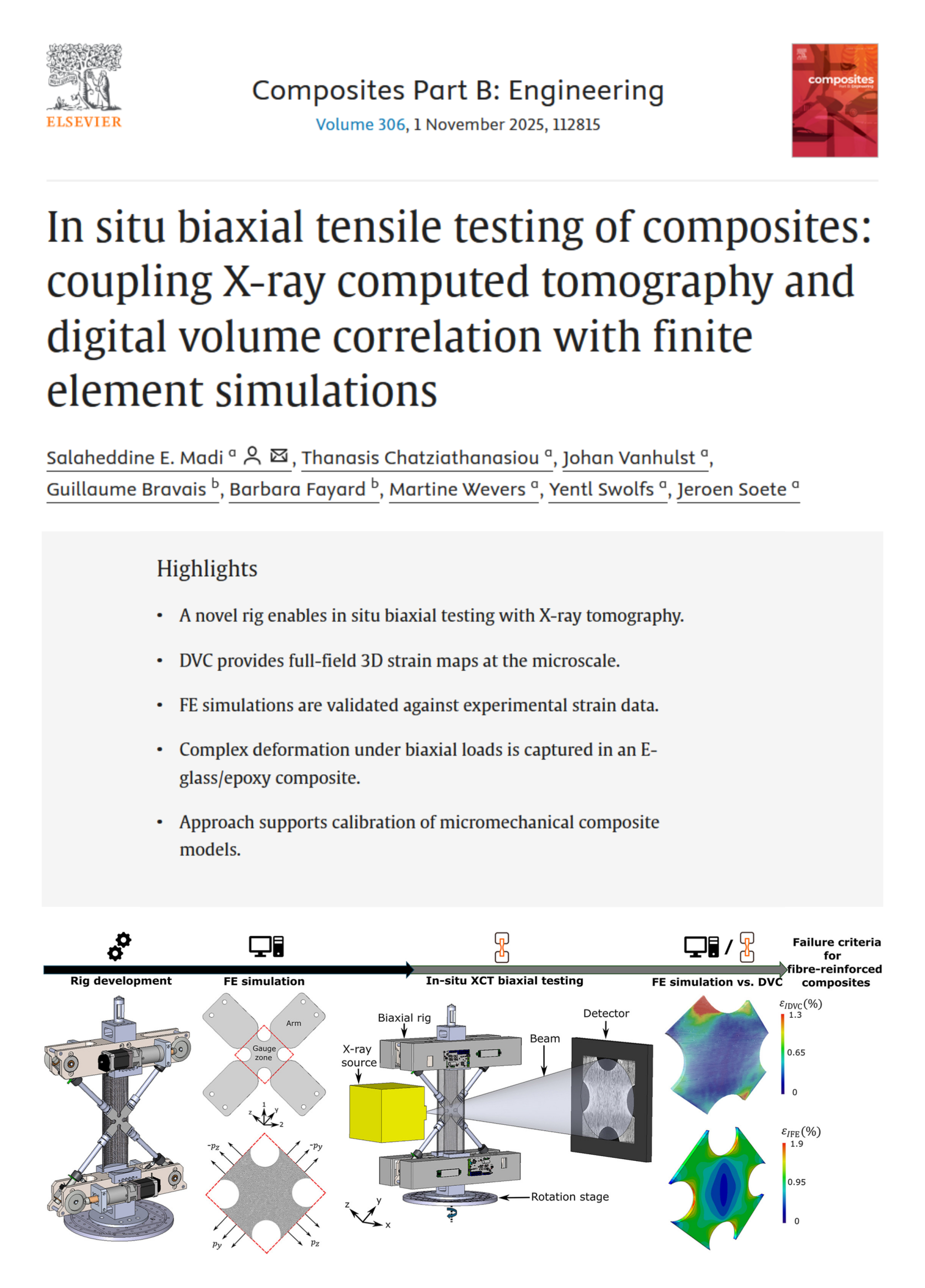The mechanical behaviour of fibre-reinforced composites under multiaxial loading is critical for their structural performance but remains challenging to characterise at the microscale. This study introduces a novel biaxial loading rig designed for in situ X-ray Computed Tomography (XCT) characterisation of fibre-reinforced composites. The rig enables controlled biaxial stress states while maintaining compatibility with high-resolution XCT imaging. Digital Volume Correlation (DVC) is employed to obtain full-field, three-dimensional strain measurements at the microscale, and Finite Element (FE) simulations are compared with the DVC results. The methodology is demonstrated on an E-glass/epoxy composite, highlighting its capability to capture complex deformation mechanisms under biaxial loading. The simulations qualitatively agreed with the experimental results in predicting the locations of strain concentrations and failure initiation, supporting the validity of the in situ experimental approach. This alignment not only reinforces confidence in the experimental outcomes but also paves the way for the use of these results to refine and calibrate micromechanical models in future studies. This work establishes a proof of concept for integrating in situ XCT, DVC, and numerical modelling to characterise the strain evolution in fibre-reinforced composites under multiaxial loading. Future research will focus on a detailed characterisation of microscale damage mechanisms. This work lays the foundation for improving the understanding and predictive modelling of composite material behaviour in structural applications.

